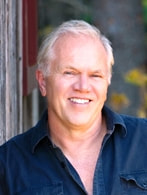 When I take a big bite into a hamburger, I am taking part in a food chain. When energy moves from one living organism (hamburger) to the next (me), scientists call this path or chain the Food Chain. Every living thing needs food. Food provides energy for plants and animals to live. Food chains begin with plants using sunlight, water and nutrients to make energy in a process called photosynthesis. There are lots of different kinds of food chains— some simple, some complex. An example of a simple food chain is when a rabbit eats grass and then a fox eats the rabbit. I think food chains are so interesting, I’ve written some poems about them. A Shark is the Sun Shark eats tuna, Tuna eats mackerel, Mackerel eats sardine, Sardine eats zooplankton, Zooplankton eats phytoplankton, Phytoplankton eats sun. So...shark eats sun. In every food chain there are producers, consumers and decomposers. Plants make their own food so they are producers. Animals are consumers because they consume plants or animals. Decomposers have the final say as they break down and decompose plants or animals and release nutrients back to the earth. Animals can be herbivores (plant eater), carnivores (meat eater) or omnivores (plant and meat eater). What are you? Why Can’t I Be On The Top? I don’t like the bottom, I want to be at the top. I’m tired of being crushed and stomped and chewed into slop. Why can’t I be the tiger with claws as sharp as shears, With a roar as loud as thunder To threaten trembling ears? Who designed this food chain? Is there a chance I can opt out? At least I’m not a plankton Floating all about. I hope you are happy with your place in the food chain. If not, you might want to sing along with the Food Chain Blues. Food Chain Blues Mama said be careful, It’s a risky world outside, Dangers lurking everywhere, Hardly a place to hide. She said some of us get eaten, And some of us survive. Count yourself quite lucky, If you make it out alive. We’re stuck in this cruel cycle, Nature’s red teeth and claws. You wanna do your best, To stay clear of someone’s jaws. I got the food chain blues I got the food chain blues Someone’s gonna eat me. I got the food chain blues! 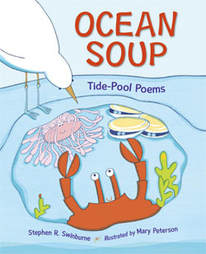 For more of Steve's poems about creatures check out Ocean Soup. It even has its own web page here. Steve Swinburne is a member of iNK's Authors on Call and is available for classroom programs through Field Trip Zoom, a terrific technology that requires only a computer, wifi, and a webcam. Click here to find out more. MLA 8 Citation
Swinburne, Stephen. "Food Chain Poems." Nonfiction Minute, iNK Think Tank, 8 Mar. 2018, www.nonfictionminute.org/the-nonfiction-minute/Food-Chain-Poems.
3 Comments
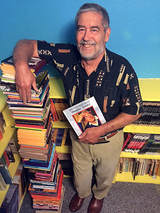 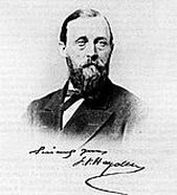 Though people have lived in the Yellowstone National Park region for at least 10,000 years, it was only “discovered” in 1807 by mountain man John Colter. People scoffed at his descriptions of the famous geysers and other features as “fire and brimstone.” Succeeding descriptions by other men during the following decades received similar dismissals. An expedition led by geologist Ferdinand Hayden in 1871 established the reality of Colter’s observations. Its members included noted landscape painter Thomas Moran and photographer William Henry Jackson. Hayden immediately realized the potential of the area. Aided by the stunning images Moran and Jackson produced, he persuaded Congress to set aside the area as a national park—the first in the United States and perhaps the world. President Ulysses S. Grant signed the bill establishing the park on March 1, 1872. It was hardly an instant success. The new park’s remoteness and lack of amenities made it accessible only to the hardiest of travelers. Only about 300 people visited it in the first year. Compounding the problem of access was the disapproval of many people who lived near the park. They wanted to continue to hunt its wildlife and cut down its trees for lumber as well as begin to mine its minerals. It was difficult to exercise any control over the situation. Congress refused to provide more than a pittance for the park’s protection. A key development came in 1886 when US Army General Phil Sheridan, acting on his own authority, ordered troops to take control of Yellowstone Park. They built Camp Sheridan (later renamed Fort Yellowstone) inside the park boundaries. Though their presence helped curb poaching and mining, they had little authority to punish offenders. George Bird Grinnell, publisher of Forest and Stream magazine and founder of the Audubon Society, had long promoted the park even though he lived in New York City. He linked up with rising politician (and future president) Theodore Roosevelt to take advantage of a notorious poaching incident in 1894 and help pass the Lacey Act the same year. The new law provided “teeth” to prosecute lawbreakers. By then, travel to Yellowstone had become a little easier. Railroads dropped off visitors near the park entrance. They boarded stagecoaches which took them to newly established lodging facilities. And by 1916, when Yellowstone became part of the newly established National Park Service, automobiles were making the park much more accessible. Today more than 3 million people thrill to Yellowstone’s natural wonders every year.
 Jim Whiting was a voracious reader when he was a kid, and now he has turned into a voracious writer. He writes books on adventure, sports, history, and most of all, he writes about people. One of his biography series is "Modern Role Models," featuring such popular titles as David Beckham, Jeff Gordon, and Tim Duncan. For more information on the series, click here. MLA 8 Citation
Whiting, Jim. "The Birth and Growing Pains of the First National Park." Nonfiction Minute, iNK Think Tank, 8 May 2018, www.nonfictionminute.org/ the-nonfiction-minute/The-Birth-and-Growing-Pains-of-the-First-National-Park. 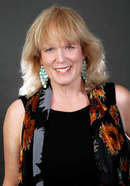 Chances are you’ve seen this photograph before—maybe on a T-shirt, on a billboard, or in a TV ad. The “Blue Marble Shot” has been reprinted more than any other photograph in history. It was taken on December 7, 1972, by one of the three Apollo 17 astronauts on their way to the Moon. But no one knows which astronaut took the picture because all three claimed to have been the photographer. During the few minutes Apollo 17 flew across the place in space located directly between the Sun and Earth (which was 28,000 miles away), no one should have been looking out of the window as they all had important tasks to do. But, obviously, someone, and perhaps everyone, was looking out. One of them grabbed a camera and clicked the shutter four times. After Apollo 17 returned to Earth, the picture was published on the front page of newspapers all over the world. For the first time ever, people saw the full planet Earth completely flooded in sunshine. Heavy clouds swirled over vast oceans. The African coastline was clearly visible, with its northeastern edge fitting like a puzzle piece with the Arabian Peninsula. Madagascar, the fourth largest island on Earth, was slightly off center, looking like a slipper floating in the middle of the Indian Ocean. And because the photo was taken just two weeks before the winter solstice, Earth’s southern hemisphere was tilted toward the sun, revealing Antarctica. For the first time ever, the south polar ice caps appeared in a photo. The mystery of who took the picture has never been solved. The commander of the mission, Eugene Cernan, who was the last man to walk on the moon, says he snapped the picture. But would the commander have had the time to take the photo at that critical point of the flight? Harrison “Jack” Schmitt, the first geologist sent to the moon, also swears that he took the picture. Perhaps that makes sense because he was responsible for making scientific observations. Ron Evans, who died in 1990, also claimed that he took the picture. No one will ever know for sure who took the Blue Marble Shot. But the words of Commander Eugene Cernan describe what he saw out of his spaceship window “…you can look out the window and you're looking at the most beautiful star in the heavens— the most beautiful because it's the one we understand and we know, it's home, it's people, family, love, life —and besides that, it is beautiful. ” 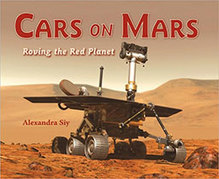 In Alex's book Cars on Mars you can follow the course of NASA’s Mars Exploration Rover (MER) mission as twin rovers Spirit and Opportunity explore the Red Planet. Learn how scientists determined that there was once water on Mars and how the earthbound NASA team resolved problems with the rovers from afar in order to prolong the mission, which continues today. For more information, click here. Alex is a member of iNK's Authors on Call and is available for classroom programs through Field Trip Zoom, a terrific technology that requires only a computer, wifi, and a webcam. Click here to find out more. MLA 8 CItation
Siy, Alexandra. "Mystery of the Blue Marble." Nonfiction Minute, iNK Think Tank, 30 Nov. 2017, www.nonfictionminute.org/ Mystery-of-the-Blue-Marble. Have you ever noticed how photographs of underwater scenes have a bluish tint? Sunlight is made up of a rainbow of colors, but when it enters the water the reds and yellows in the light are quickly filtered out. The blues and greens penetrate deeper into the water and give those watery scenes their peculiar cast. Because there is very little red light in the deep sea, most of the animals that live there have never evolved the ability to see the color red. This is why many deep-sea animals are red. In the depths of the ocean, a creature that can’t be seen is safe from many predators. There is an unusual fish that takes advantage of its fellow sea creatures’ colorblindness. The stoplight loosejaw, a member of the dragonfish family, can see the color red. Not only that, but it has a patch on its face that glows red. It also has a glowing green spot on its face, which is probably used to communicate with other dragonfish. These red and green patches explain the “stoplight” part of this fish’s name. The “loosejaw” comes from this fish’s ability to open its mouth extra wide and swallow large prey. Scientists think that the open structure of the lower jaw allows the fish to close its mouth quickly, making it difficult for prey to escape. Relative to its size, the stoplight loosejaw has one of the widest gapes of any fish, with a lower jaw measuring one-quarter of the fish’s length. It’s not easy for animals that live in the dark waters of the deep sea to find prey. Many of them, including the stoplight loosejaw, have large mouths and sharp fangs that help ensure that their prey cannot escape. Below about 650 feet (200 meters), very little sunlight penetrates the ocean. Below 3,300 feet (1,000 meters), the only light is that produced by living creatures. Almost all deep-sea creatures can bioluminescence, or make their own light. But the light they produce is usually blue or green. When the stoplight loosejaw switches on its red spotlight, other creatures in the water are illuminated. Being blind to the color red, they don’t realize that they’ve been spotted. Dragonfish are not known as picky eaters. If one of the lit-up animals is a fish, shrimp, or other suitable prey, the stoplight loosejaw quickly grabs it and swallows it. The stoplight loosejaw's attributes include a red spot, hinged jaws, and needle-like teeth. Illustration by Steve Jenkins There are two kinds of stoplight loosejaws. The Northern (Malacosteus niger) shown here and the Southern. Together they are found everywhere in the world except the North and South Poles. Wikimedia Commons  Steve Jenkins has written and illustrated more than forty nonfiction picture books, including the Caldecott Honor– winning What Do You Do with a Tail Like This? and the Boston Globe Horn Book honor–winning The Animal Book. His most recent books are Apex Predators: Top Killers Past and Present and Who Am I?, an animal guessing game written with Robin Page. MLA 8 Citation
Jenkins, Steve. "The Fish That Sees Red." Nonfiction Minute, iNK Think Tank, 6 June 2018, www.nonfictionminute.org/the-nonfiction-minute/ The-Fish-that-Sees-Red. 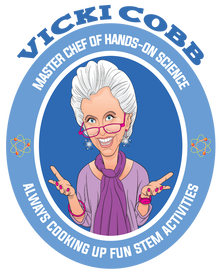 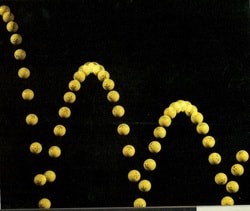 You can’t play tennis unless you know where the ball will be after it bounces. You can’t pass a basketball unless you understand how to angle a bounce so that it goes where you want it to go. As long as the court surface is smooth and flat, a ball’s bounce is very predictable. Its path depends on gravity and on the strength and direction of the force that sets the ball in motion. Thanks to high speed photography we can get a closer look at a bouncing ball. This is a multiple exposure photograph of a bouncing ball. It was taken in complete darkness with the camera shutter open while a high-speed flashing light, called a stroboscope or strobe, flashed 30 times a second. Each flash produced an image. Here’s what you can learn from this photo: The ball is moving fastest where the images are farthest apart and slowest where they are closest together. When the ball is falling, it speeds up. After it bounces and moves opposite the pull of gravity, it slows down at exactly the same rate as it sped up when it was falling until it stops for an instant and starts falling again. Each time it collides with the ground, some energy is lost. That’s why each bounce loses altitude. If the bounce were perfect, no energy would be lost, every bounce would be as high as the last and the ball would bounce forever. A strobe also captures the split second when a tennis ball is struck by a racket. The collision flattens the ball, and stretches the strings and distorts the frame of the racket, all in .005 seconds. If these objects kept their distorted shapes, most of the force of the collision would be absorbed. But they are elastic—they restore themselves to their original shapes after they collide. This restoring force is transferred to the ball to change its direction and help add to the speed of the athlete’s swing. The fastest serve leaves a racket at 130 miles an hour. In a rally, a ball-racket collision changes direction of the ball so it is not as fast as a serve, maybe 70 miles per hour. Since the distance between images made by a strobe tells how fast an object is moving, strobes are part of the instruments used to measure the speed of balls from a tennis racket and a baseball pitcher. 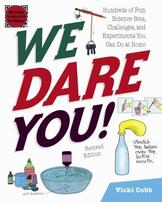 Would you believe that you could throw an egg across the room without breaking it? Burn a candle underwater? Vicki Cobb's We Dare You! is a gigantic collection of irresistible, easy-to-perform science experiments, tricks, bets, and games kids can do at home with everyday household objects. Thanks to the principles of gravity, mechanics, fluids, logic, geometry, energy, and perception, kids will find countless hours of fun with the selections included in this book. If you would like to make a We Dare You Video, click here. Vicki Cobb is a member of iNK's Authors on Call and is available for classroom programs through Field Trip Zoom, a terrific technology that requires only a computer, wifi, and a webcam. Click here to find out more. MLA 8 Citation
Cobb, Vicki. "A Bouncing Ball Like You've Never Seen." Nonfiction Minute, iNK Think Tank, 5 Feb. 2018, www.nonfictionminute.org/the-nonfiction-minute/ a-bouncing-ball-like-you've-never-seen. |
*NEWS
|
For Vicki Cobb's BLOG (nonfiction book reviews, info on education, more), click here: Vicki's Blog
The NCSS-CBC Notable Social Studies Committee is pleased to inform you
that 30 People Who Changed the World has been selected for Notable Social Studies Trade Books for Young People 2018, a cooperative project of the National Council for the Social Studies (NCSS) & the Children’s Book Council
Categories
All
Abolitionists
Adams Janus
Adaptation
Adaptations
Adkins Jan
Advertising
Aerodynamics
Africa
African American History
African Americans
Africa West
Agriculture
Aircraft
Air Pilots
Air Pressure
Air Travel
Albee Sarah
Alchemy
Alligators
Allusion
American History
American Icons
Amphibians
Amundsen Roald
Anatomy
Ancient
Ancient Cultures
Anderson Marian 1897-1993
Animal Behavior
Animal Experimentation
Animal Intelligence
Animals
Animation
Antarctica
Ants
Apache Indians
Apes
April Fool's Day
Architecture
Argument
Arithmetic
Art
Art Deco
Artists
Arts
Asia
Astronauts
Astronomy
Athletes
Atomic Theory
Audubon Societies
Authors
Autobiography
Automobiles
Aviation
Awards
Bacteria
Baseball
Battuta Ibn
Bears
Beatles
Beavers
Bees
Biodegradation
Biography
Biology
Biomes
Biomimicry
Biplanes
Birds
Black Death
Black History
Blindness
Blizzards
Bombs
Bonaparte Napoleon
Boone Daniel
Botany
Brazil
Bridges
Brill Marlene Targ
Brooklyn Bridge
Brown John
Buffaloes
Building Materials
Butterflies
Caesar
Caesar Julius
Caissons
Calculus
Calendars
Cannibal
Capitals
Caravaggio
Carbon Dioxide
Carnivores
Carson Mary Kay
Cartoons & Comics
Carving (Decorative Arts)
Cascade Range
Castaldo Nancy
Castles
Castrovilla Selene
Cathedrals
Cats
Caves
Celts
Cemeteries
Chemistry
Children's Authors
Child Welfare
China
Choctaw Indians
Christmas
Chronometers
Cicadas
Cinco De Mayo
Ciphers
Circle
Citizenship
Civil Rights
Civil Rights Movements
Civil War
Civil War - US
Climate
Climate Change
Clocks And Watches
Clouds
Cobb Vicki
COBOL (Computer Language)
Code And Cipher Stories
Collard III Sneed B.
Collectors And Collecting
Color
Commerce
Communication
Competition
Compilers
Composers
Computers
Congressional Gold Medal
Consitution
Contests
Contraltos
Coolidge Calvin
Cooling
Corms
Corn
Counterfeiters
Covid-19
Crocodiles
Cryptography
Culture
Darwin Charles
Declaration Of Independence
Decomposition
Decompression Sickness
Deep-sea Animals
Deer
De Medici Catherine
Design
Detectives
Dickens Charles
Disasters
Discrimination
Diseases
Disney Walt
DNA
Dogs
Dollar
Dolphins
Douglass Frederick 1818-1895
Droughts
Dr. Suess
Dunphy Madeleine
Ear
Earth
Earthquakes
Ecology
Economics
Ecosystem
Edison Thomas A
Education
Egypt
Eiffel-gustave-18321923
Eiffel-tower
Einstein-albert
Elephants
Elk
Emancipationproclamation
Endangered Species
Endangered-species
Energy
Engineering
England
Englishlanguage-arts
Entomology
Environmental-protection
Environmental-science
Equinox
Erie-canal
Etymology
Europe
European-history
Evolution
Experiments
Explorers
Explosions
Exports
Extinction
Extinction-biology
Eye
Fairs
Fawkes-guy
Federalgovernment
Film
Fires
Fishes
Flight
Floods
Flowers
Flute
Food
Food-chains
Foodpreservation
Foodsupply
Food-supply
Football
Forceandenergy
Force-and-energy
Forensicscienceandmedicine
Forensic Science And Medicine
Fossils
Foundlings
France
Francoprussian-war
Freedom
Freedomofspeech
French-revolution
Friction
Frogs
Frontier
Frontier-and-pioneer-life
Frozenfoods
Fugitiveslaves
Fultonrobert
Galapagos-islands
Galleys
Gametheory
Gaudi-antoni-18521926
Gender
Generals
Genes
Genetics
Geography
Geology
Geometry
Geysers
Ghosts
Giraffe
Glaciers
Glaucoma
Gliders-aeronautics
Global-warming
Gods-goddesses
Gold-mines-and-mining
Government
Grant-ulysses-s
Grasshoppers
Gravity
Great-britain
Great-depression
Greece
Greek-letters
Greenberg Jan
Hair
Halloween
Handel-george-frederic
Harness Cheryl
Harrison-john-16931776
Health-wellness
Hearing
Hearing-aids
Hearst-william-randolph
Henry-iv-king-of-england
Herbivores
Hip Hop
History
History-19th-century
History-france
History-world
Hitler-adolph
Hoaxes
Holidays
Hollihan Kerrie Logan
Homestead-law
Hopper-grace
Horses
Hot Air Balloons
Hot-air-balloons
Housing
Huguenots
Human Body
Hurricanes
Ice
Icebergs
Illustration
Imagery
Imhotep
Imperialism
Indian-code-talkers
Indonesia
Industrialization
Industrial-revolution
Inquisition
Insects
Insulation
Intelligence
Interstatecommerce
Interviewing
Inventions
Inventors
Irrational-numbers
Irrigation
Islands
Jacksonandrew
Jazz
Jeffersonthomas
Jefferson-thomas
Jemisonmae
Jenkins-steve
Jet-stream
Johnsonlyndonb
Jokes
Journalism
Keeling-charles-d
Kennedyjohnf
Kenya
Kidnapping
Kingmartinlutherjr19291968
Kingmartinlutherjr19291968d6528702d6
Kings-and-rulers
Kings Queens
Kings-queens
Koala
Labor
Labor Policy
Lafayette Marie Joseph Paul Yves Roch Gilbert Du Motier Marquis De 17571834
Landscapes
Languages-and-culture
Law-enforcement
Layfayette
Levers
Levinson Cynthia
Lewis And Clark Expedition (1804-1806)
Lewis Edmonia
Liberty
Lift (Aerodynamics)
Light
Lindbergh Charles
Liszt Franz
Literary Devices
Literature
Lizards
Longitude
Louis XIV King Of France
Lumber
Lunar Calendar
Lynching
Macaws
Madison-dolley
Madison-james
Madison-james
Mammals
Maneta-norman
Maneta-norman
Marathon-greece
Marine-biology
Marine-biology
Marines
Marsupials
Martial-arts
Marx-trish
Mass
Massachusetts-maritime-academy
Mass-media
Mastodons
Mathematics
May-day
Mcclafferty-carla-killough
Mcclafferty-carla-killough
Mckinley-william
Measurement
Mechanics
Media-literacy
Media-literacy
Medicine
Memoir
Memorial-day
Metaphor
Meteorology
Mexico
Mickey-mouse
Microscopy
Middle-west
Migration
Military
Miners
Mississippi
Molasses
Monarchy
Monsters
Montgomery
Montgomery-bus-boycott-19551956
Montgomery-heather-l
Monuments
Moon
Moran-thomas
Morsecode
Morsesamuel
Moss-marissa
Moss-marissa
Motion
Motion-pictures
Mummies
Munro-roxie
Munro-roxie
Musclestrength
Museums
Music
Muslims
Mythologygreek
Nanofibers
Nanotechnology
Nathan-amy
Nathan-amy
Nationalfootballleague
Nationalparksandreserves
Nativeamericans
Native-americans
Native-americans
Naturalhistory
Naturalists
Nature
Nauticalcharts
Nauticalinstruments
Navajoindians
Navigation
Navy
Ncaafootball
Nervoussystem
Newdeal19331939
Newman-aline
Newman-aline
Newton-isaac
New-york-city
Nobelprizewinners
Nomads
Nonfictionnarrative
Nutrition
Nylon
Nymphs-insects
Oaths Of Office
Occupations
Ocean
Ocean-liners
Olympics
Omnivores
Optics
Origami
Origin
Orphans
Ottomanempire
Painters
Painting
Paleontology
Pandemic
Paper-airplanes
Parksrosa19132005
Parrots
Passiveresistance
Patent Dorothy Hinshaw
Peerreview
Penguins
Persistence
Personalnarrative
Personification
Pets
Photography
Physics
Pi
Pigeons
Pilots
Pinkertonallan
Pirates
Plague
Plains
Plainsindians
Planets
Plantbreeding
Plants
Plastics
Poaching
Poetry
Poisons
Poland
Police
Political-parties
Pollen
Pollution
Polo-marco
Populism
Portraits
Predation
Predators
Presidentialmedaloffreedom
Presidents
Prey
Prey-predators
Prey-predators
Prime-meridian
Pringle Laurence
Prohibition
Proteins
Protestandsocialmovements
Protestants
Protestsongs
Punishment
Pyramids
Questioning
Radio
Railroad
Rainforests
Rappaport-doreen
Ratio
Reading
Realism
Recipes
Recycling
Refrigerators
Reich-susanna
Religion
Renaissance
Reproduction
Reptiles
Reservoirs
Rheumatoidarthritis
Rhythm-and-blues-music
Rice
Rivers
Roaringtwenties
Roosevelteleanor
Rooseveltfranklind
Roosevelt-franklin-d
Roosevelt-theodore
Running
Russia
Safety
Sanitation
Schwartz David M
Science
Scientificmethod
Scientists
Scottrobert
Sculpture
Sculpturegardens
Sea-level
Seals
Seals-animals
Secretariesofstate
Secretservice
Seeds
Segregation
Segregationineducation
Sensessensation
September11terroristattacks2001
Seuss
Sextant
Shackletonernest
Shawneeindians
Ships
Shortstories
Silkworms
Simple-machines
Singers
Siy Alexandra
Slavery
Smuggling
Snakes
Socialchange
Social-change
Socialjustice
Social-justice
Socialstudies
Social-studies
Social-studies
Sodhouses
Solarsystem
Sound
Southeast-asia
Soybean
Space Travelers
Spain
Speech
Speed
Spiders
Spies
Spiritualssongs
Sports
Sports-history
Sports-science
Spring
Squirrels
Statue-of-liberty
STEM
Storms
Strategy
Sugar
Sumatra
Summer
Superbowl
Surgery
Survival
Swanson-jennifer
Swinburne Stephen R.
Synthetic-drugs
Taiwan
Tardigrada
Tasmania
Tasmanian Devil
Tasmanian-devil
Technology
Tecumsehshawneechief
Telegraph-wireless
Temperature
Tennis
Terrorism
Thomas Peggy
Thompson Laurie Ann
Time
Titanic
Tombs
Tortoises
Towle Sarah
Transcontinental-flights
Transportation
Travel
Trees
Trung Sisters Rebellion
Tundra
Turnips
Turtles
Typhoons
Underground Railroad
Us-environmental-protection-agency
Us History
Us-history
Ushistoryrevolution
Us History Revolution
Us-history-war-of-1812
Us Presidents
Ussupremecourtlandmarkcases
Vacations
Vaccines
Vangoghvincent
Vegetables
Venom
Vietnam
Viruses
Visual-literacy
Volcanoes
Voting-rghts
War
Warne-kate
Warren Andrea
Washington-dc
Washington George
Water
Water-currents
Wax-figures
Weapons
Weather
Weatherford Carole Boston
Whiting Jim
Wildfires
Winds
Windsor-castle
Wolves
Woman In History
Women
Women Airforce Service Pilots
Women-airforce-service-pilots
Womeninhistory
Women In History
Women-in-science
Women's History
Womens-roles-through-history
Wonder
Woodson-carter-godwin-18751950
World-war-i
World War Ii
World-war-ii
Wright Brothers
Writing
Writing-skills
Wwi
Xrays
Yellowstone-national-park
Zaunders Bo
ArchivesMarch 2021
February 2021
January 2021
December 2020
November 2020
October 2020
September 2020
June 2020
May 2020
April 2020
March 2020
February 2020
January 2020
December 2019
October 2019
September 2019
August 2019
July 2019
May 2019
April 2019
March 2019
February 2019
January 2019
December 2018
November 2018
September 2018
June 2018
May 2018
April 2018
March 2018
February 2018
January 2018
December 2017
November 2017
October 2017
September 2017
March 2017
The NONFICTION MINUTE, Authors on Call, and. the iNK Books & Media Store are divisions of iNK THINK TANK INC.
a 501 (c) (3) nonprofit corporation. To return to the iNK Think Tank landing page click the icon or the link below. :
http://inkthinktank.org/
For more information or support, contact thoughts@inkthinktank.org
For Privacy Policy, go to
Privacy Policy
© COPYRIGHT the Nonfiction Minute 2020.
ALL RIGHTS RESERVED.
This site uses cookies to personalize your experience, analyze site usage, and offer tailored promotions. www.youronlinechoices.eu
Remind me later
Archives
March 2023
February 2023
January 2023
December 2022
November 2022
October 2022
September 2022
June 2022
May 2022
April 2022
March 2022
February 2022
January 2022
December 2021
November 2021
September 2021
April 2021
March 2021
February 2021
November 2020
October 2020
September 2020
June 2020
May 2020
April 2020
March 2020
February 2020
January 2020
October 2019
August 2019
July 2019
May 2019
April 2019
December 2018
September 2018
June 2018
May 2018
March 2018
February 2018
January 2018
December 2017
November 2017
October 2017
September 2017


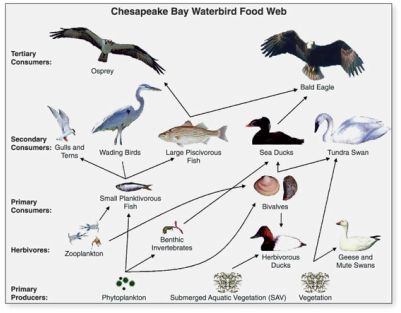
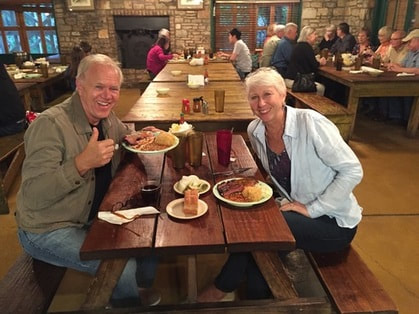


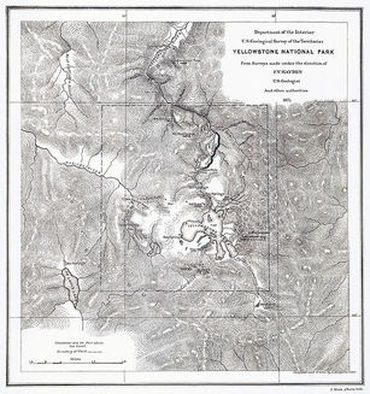
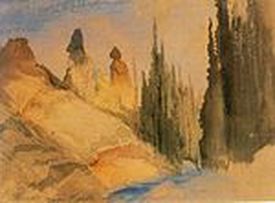
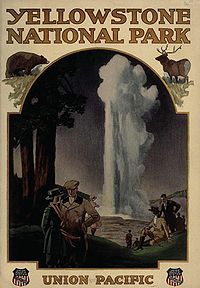
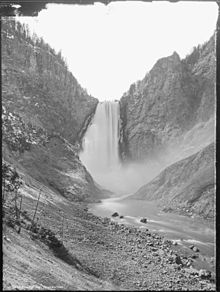
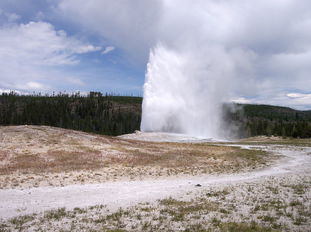



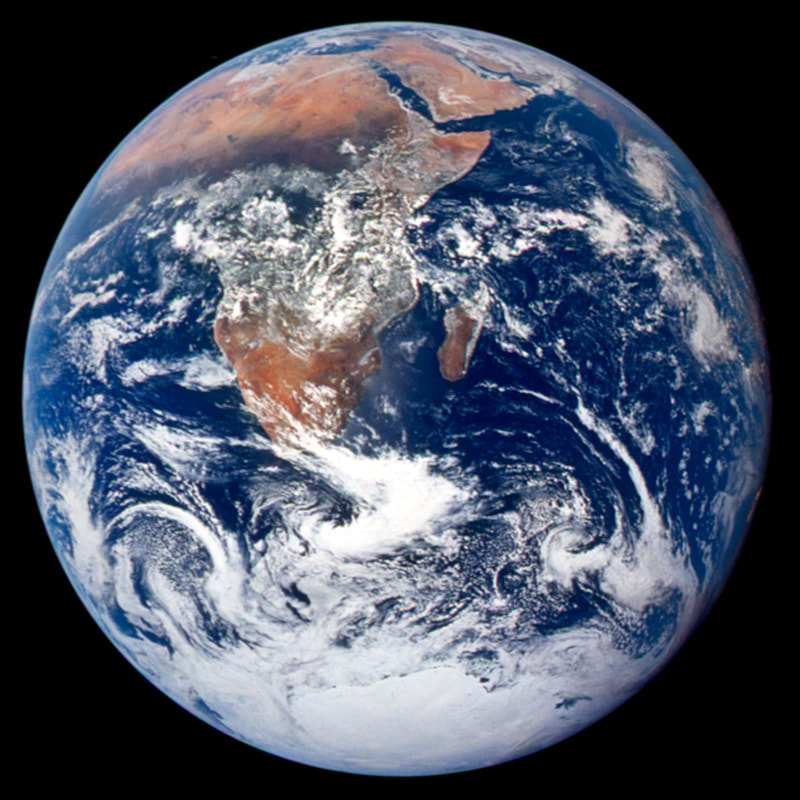

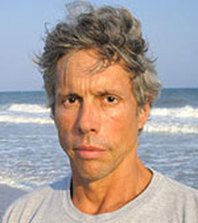

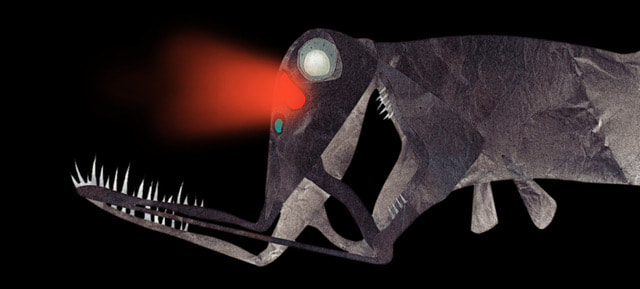
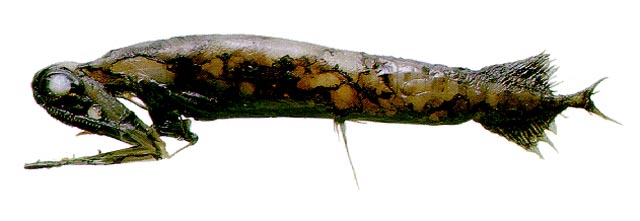


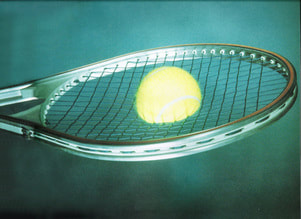

 RSS Feed
RSS Feed
